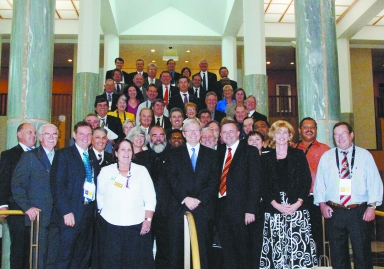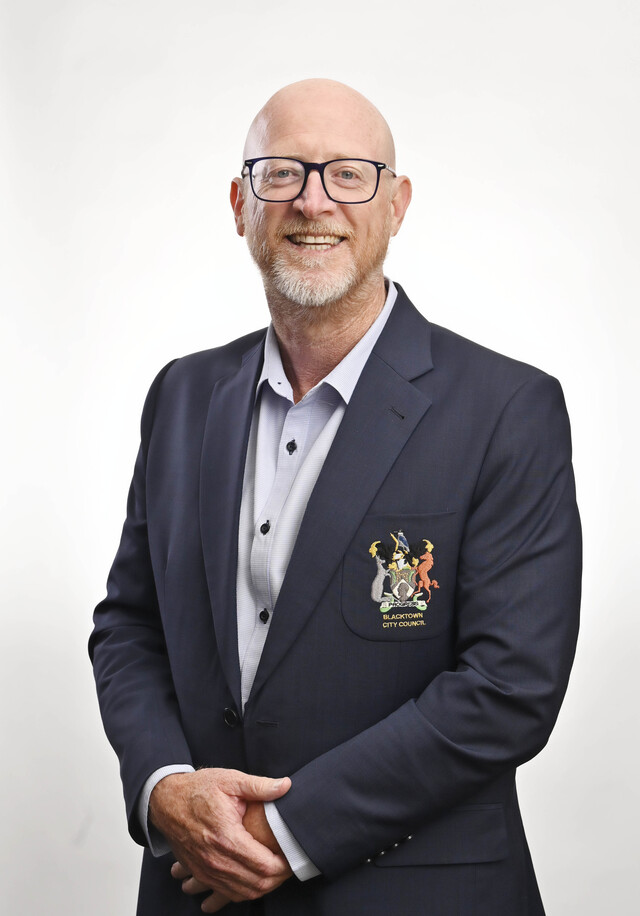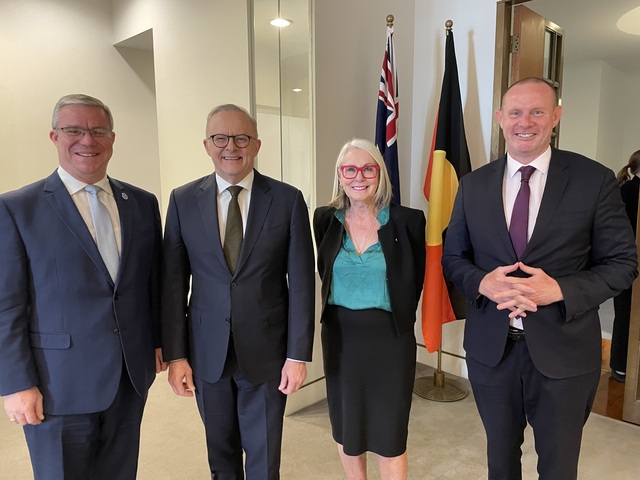The Prime Minister, Kevin Rudd, described the inaugural meeting of the Australian Council of Local Government (ACLG) at Parliament House in Canberra on 18 November as one of the biggest gatherings of elected representatives in Australian history.
“Today we turn a page and begin a new era in the relationship between Australia’s National Government and the Local Governments that represent local communities across our nation,” the Prime Minister said. “Today brings together more than 400 mayors and representatives from councils and shires across this nation.”
Every Federal Cabinet Minister in the country on that day, as well as a number of backbenchers, joined Local Government delegates for this historic meeting. Various State and Territory Ministers were also present.
“We gather today for three reasons,” Kevin Rudd said. “First, to establish a new, stronger and more coherent relationship between the federal and local spheres of government.
“Second, to receive your input on our election commitment to the Constitutional recognition of Local Government, rather than us simply imposing our view.
“And third, to begin work on a planning reform agenda to improve infrastructure and service delivery across this country.”
This historic first meeting of the Australian Local Government Council included a series of breakout sessions addressing specific challenges facing councils, covering infrastructure, productive cities, Local Government efficiency, regional communities, local environments, Constitutional recognition, housing affordability, social inclusion and Indigenous engagement.
New partnership with
Local Government
Having just returned from the G-20 Summit in Washington, the Prime Minister said that where the private economy cannot fill the growth gap, government must step in.
“We are waging a war against global recession and global unemployment – and we are determined to deploy every tool at our disposal,” he said. “You can’t have a strong national economy if you don’t have strong local economies.
“Because Local Government has an important role in strengthening and stimulating local economies, local businesses and local jobs, that is one of a number of reasons why the Government attaches priority to a new partnership with Local Government.
“We believe in partnering with Local Government in a long term reform program that better serves the nation, the economy and local communities.
“The Government’s commitment to a new partnership with Local Government is part of our wider commitment to new ways of governing that are relevant to the 21st century, and the establishment of the Australian Council of Local Government is part of this reform program.”
Improving asset management
and financial planning
Referring to the PricewaterhouseCoopers 2006 report that estimated a $1.1 billion annual underspend in the renewal of community infrastructure by Local Government, the Prime Minister described the $300 million package under the Regional and Local Community Infrastructure Program as “an important step in the Commonwealth’s commitment to immediate infrastructure investment”.
However, he pointed to the need for long term reform of the management of infrastructure as well.
“We must improve asset management and financial management,” he said. “Councils that plan and manage their assets effectively are councils that can deliver value for money to their communities. The quality and transparency of financial management varies greatly across different Local Governments.
“We need to know what we’ve got, what condition it is in, whether it needs to be repaired and how much it costs to maintain. This is the most basic level of information.
“All States and Territories have agreed to adopt and implement nationally consistent financial and asset management and planning frameworks for Local Government developed by the Local Government and Planning Ministers’ Council. But implementation has been patchy.
“Where appropriate, the Government will consider making resources available for a long term reform fund to support councils as they improve their asset management and financial plans. The Commonwealth will also consider making its future infrastructure investments linked to the implementation of nationally consistent asset management systems.
“Next year at the ACLG I would like to be having a discussion about infrastructure needs that is informed by an agreed set of information based on council asset and financial management plans. I would like to be having a discussion that looks at our infrastructure needs for the next decades and beyond.”
$300 million investment in
local communities
With the Regional and Local Community Infrastructure Program announced in the last budget originally to commence in 2009–10, the Prime Minister said that with the current economic conditions and the urgent need for investment in community infrastructure, the Government has decided to bring forward this investment.
“It’s ready to go now,” he said. “The purpose of this action is to build local infrastructure and help support local economies and jobs during the global financial crisis.”
The initial $300 million injection into the program will be delivered by 30 June 2009. $250 million of this first allocation will see each council receiving a minimum $100,000 with the remainder divided up across all councils based on a formula that recognises need and population growth.
Councils ready to go
Following the PricewaterhouseCoopers report in 2006, the Australian Local Government Association established its Community Infrastructure Ideas Register. Councils were invited to put forward urgently needed local projects. This means a raft of projects are ready to go and will be completed by the required date of 30 September 2009.
The remaining $50 million is available for larger scale local projects such as new sports stadiums, entertainment precincts and cultural centres that require a larger Commonwealth contribution – $2 million or more.
New Local Government centre for excellence announced
Kevin Rudd told delegates that an improved workforce capability is “critically important to building the effective 21st century Local Government”.
“Attracting and retaining skilled staff, ensuring the ongoing training and development of personnel and establishing Local Government as an employer of choice are significant challenges for Local Government,” he said. “The Commonwealth can take steps to support and enhance the professionalism of Local Government.
“That is why I am pleased to announce that the Australian Government will contribute up to $8 million in funding for a new centre for excellence for Local Government.
“The Australian Government will provide an endowment to showcase innovation and best practice across Local Government and encourage the wider adoption of innovative practices and solutions. We intend this to be based in a university, but delivered virtually as well as physically to maximise access across all of Australia’s 565 local authorities.”
Future ACLG meetings
Minister for Infrastructure, Transport, Regional Development and Local Government, Anthony Albanese, said similar meetings involving all mayors and shire presidents will become an annual event, with more regular smaller meetings with ALGA executive members, representatives of professional bodies and workers’ representatives.








